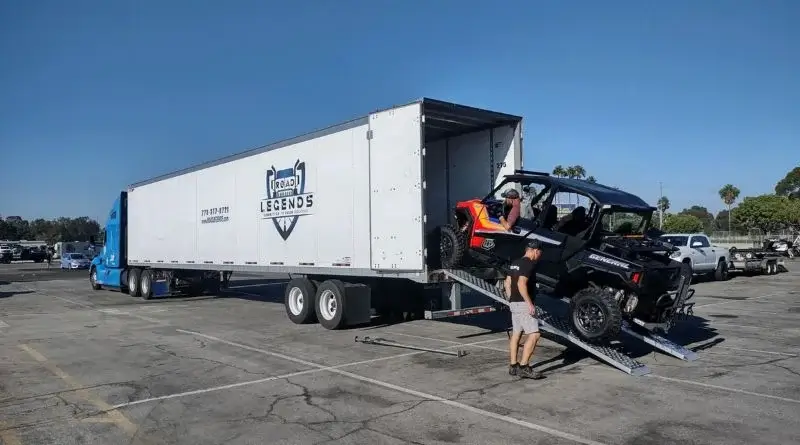7 Easy Steps To Become a Truck Driver in The US
You should understand some things about the process if you want to drive a truck but are unsure of how to do so.
It’s crucial to get your new career off to a good start.
The good news is that obtaining a CDL and becoming a truck driver only require a few simple steps.
It’s crucial to execute the “early steps” correctly.
Your ability to obtain a truck driving license may be delayed or even jeopardized if you make mistakes, such as selecting the incorrect driver training school.
Here, we’ll walk you through the entire process of obtaining a Class A CDL so you can get behind the wheel of a truck and pursue your dream of becoming a truck driver.
Step 1—Review the Basic Requirements for Eligibility
Get a general idea of the truck driving process before starting. You must fulfill the following criteria to be eligible to apply for a commercial driver’s license (CDL) in the US:
- Have a regular driver’s license in good standing
- Be at least 21 years old (although drivers may occasionally be between the ages of 18 and 21).
- An active social security number
- Pass background investigations and screenings.
- Maintain a clean driving record in accordance with your state’s regulations.
- Possess a GED or high school diploma
Check what your state requires for you to obtain your CDL because the specific requirements vary by state.
Step 2—Obtain a Commercial Driver’s License (CDL)
Ask for a copy of the state commercial driver’s manual at the DMV office that is closest to you. Online digital copies are also available at numerous state DMV websites.
You need a CDL Class A to operate a tractor-trailer or any other kind of Class B truck in the US. You only need a CDL Class B if you plan to drive the vehicle by yourself without towing a trailer.
Due to reciprocity agreements, you can drive a truck in any of the three participating nations—the US, Mexico, and Canada. To drive a truck in the United States, however, you must be at least 21 years old in both Canada and Mexico, according to federal law in the United States.
Review the information about fees, classes, and restrictions about the various traffic and safety laws that apply to commercial driving by studying its contents.
You must make sure that you study from the most recent edition of the manual because traffic laws can change. Normally, new editions are printed once a year.
Step 3—Address Issues That Could Prevent You From Getting Your CDL
Even if you meet the basic eligibility requirements, a few things could prevent you from getting your CDL.
They consist of the following:
- Specific prescription drugs
- Health issues that truck drivers face like diabetes, high blood pressure, and sleep apnea
- Bodily impairments such as missing fingers, toes, or limbs
- Charges for serious crimes like drunk driving or reckless driving
- Arson, kidnapping, and extortion convictions for felonies
If you have one of the aforementioned physical impairments or medical conditions, you might be able to get a doctor’s written waiver stating that you won’t be unable to safely operate a commercial vehicle.
A felony conviction may not be the end of the road for those who have a troubled past.
Drug tests are not required as part of the CDL application process. However, they are necessary when submitting a job application for a commercial driver.
You will be subject to sporadic drug testing after being hired. Additionally, it is required that you submit to a drug test if you are involved in an accident.
Casual drug use almost always comes back to haunt you because many carriers frequently test drivers who have just returned from leave or brief breaks at home.
When it comes to drug testing, a lot of new drivers adopt the “it won’t happen to me” attitude. So make a wise choice and take your career seriously!
Step 4—Research Truck Driver Duties
It’s crucial to be aware of the responsibilities and duties involved in this profession before deciding to pursue a career as a truck driver. Most jobs for truck drivers include a few standard duties. Here is a list of the main duties that define the role:
- Manage and expedite the safe delivery of logistical supplies and HAZMAT chemicals to private, public, and governmental facilities
- Flat loads of equipment, pipe, refractory brick, commercial building supplies, steel, specialty metals, and lumber are also included
- Adhering to all HAZMAT regulations
- When necessary, use appropriate safety equipment.

Step 5—Prepare Your Resume
After you have reviewed the necessary qualifications and duties for the position, you can begin drafting your resume. It can take hours, days, or even weeks to complete everything that goes into writing the ideal resume. You can look at some of the top drivers resumes online and build the one that truly resonates with you and the company you are applying to.
Step 6—Apply For Employment
When you complete your training, you will be employed if you obtained your CDL through a company training program. However, if you went to a truck driving school, you must start looking for employment. Most companies offer sign-on bonuses and other perks, so that’s a great perk. Receiving multiple job offers is typical due to the ongoing driver shortage and high demand for drivers.
Browse job boards like monster.com, indeed.com or adzuna.com to begin applying. Additionally, you can look on trucking websites themselves for truck driver jobs.
You can look for truck driving jobs on Google as well. Search engines compile data from various sources, enabling you to discover new sources and listings quickly. The quickest way to find top-notch jobs with reputable trucking companies is through search engines.
Step 7—Start Driving!
You can start driving and finish the process of becoming a truck driver once you have obtained your CDL and found a job in the industry. One of the most crucial things you can do when starting your career is to gain experience. Future opportunities will increase as you gain more experience. Following tried-and-true advice for novice truck drivers that has been passed down from more experienced drivers also doesn’t hurt.




